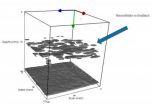A new book by researchers at the World Agroforestry Centre (ICRAF) and the Kenya Medical Research Institute (KEMRI), Common Antimalarial Trees and Shrubs of East Africa, provides a detailed assessment of 22 of the region's malaria-fighting trees and shrubs. While over a thousand plant species have been identified by traditional healers as effective in the prevention or treatment of malaria symptoms, the species in the book were assigned by both traditional medicinal practitioners and scientists as those that have potential for further study.
According to researchers, many species of trees in East Africa are at high risk of extinction due to deforestation and over-exploitation for medicinal uses. Scientists in the field have been able to identify at-risk tree species, including those that have antimalarial qualities, by monitoring deforestation in the region and by talking to herbalists and local communities. According to researchers, not all species of antimalarial trees are at risk, particularly those that grow wild in lowland and coastal areas.
ICRAF is doing its part preserving these trees and shrubs by holding samples of most of the species with antimalarial qualities in its genebank and growing these trees in plant nurseries at its headquarters in Nairobi. The ICRAF genebank holds close to 200 species, of which at least 30 are known to have antimalarial properties.
The field data was gathered by ICRAF scientists conducting research across Kenya, Uganda, and Tanzania, where they met with approximately 180 herbalists and 100 malaria patients in 30 separate communities. KEMRI supported the process by supplying the information about each plant's chemical compound make-up—research that is the result of a sophisticated laboratory process developed by KEMRI for testing natural products.
"We've only scratched the surface on the potential value of these plants. Although widely used by farmers and people in rural communities, most of this information has never been collected in a comprehensive way by researchers," said Dr. Geoffrey Rukunga, Director of KEMRI's Centre for Traditional Medicine and Drug Research and one of the book's co-authors. "Going forward, I'd like to see more investment and more research on the power of these plants to fight the scourge of malaria and other diseases."
One of the drugs most widely used historically to treat malaria, quinine, was derived from the bark of the Cinchona tree in South America. Today, the world's newest, most-effective therapeutic treatment for malaria also comes from a plant, the Artemisia annua shrub. However, access to malaria therapies based on artemisinin compounds remains low—around 15 percent in most parts of Africa and well below the World Health Organizations' 80 percent target.
Additionally, the malaria parasite's ability to resist artemisinin is already beginning to emerge in Southeast Asia. This comes years after the World Health Organization labeled the spreading resistance of malaria to cheap and widely available drugs such as chloroquine and sulfadoxine-pyrimethamine as a major public health problem. The increasing failure of once-effective malaria drugs has added urgency to the search for promising new targets.
Malaria still kills some 800,000 people per year, the majority of whom are children under five years of age in sub-Saharan Africa. A lack of access to doctors and drugs leaves many communities in Africa with few alternatives other than looking for natural remedies to address symptoms of malaria, including high fever, severe headaches, bone aches, nausea and vomiting.
"We're not saying that using these medicinal plants is a replacement for common prevention treatments like bed nets or effective medicines like ACT," said Dr Najma Dharani, a Consultant Research Scientist at the ICRAF in Nairobi, Kenya, who led the field research portion of the study. "But we believe that it's worth learning from communities that have been treating malaria symptoms with plants for hundreds of years. We need to do more research because one of these plants could prove to be the next Artemisia, and we need to do our best to preserve the plants that are going extinct."
Indeed, without clear research or proper guidance for their sustainable use, many of the plants with medicinal properties are being over-exploited and are in danger of extinction. One such plant, which is critically endangered in Kenya and threatened in other regions, is Zanthoxylum chalybeum, commonly known as "Knobwood." It grows in dry woodlands or grasslands of eastern and southern Africa and has been found to have antimalarial properties that need to be further explored. An extraction process from leaves, bark or root is used to effectively treat a malarial fever in many communities. Other uses for the plant include infusing tea with the leaves, making toothbrushes, and using the seeds as beads in traditional garments. The African wild olive (Olea europaea Africana), also threatened in East Africa due to over-exploited for timber, contains organic extracts with significant levels of antimalarial activity, and is used to treat malarial and other fevers. The plant also acts as a natural laxative to expel parasites or tapeworms.
"Throughout my eight years of research in Africa, I have seen that we have an entire pharmacy in our farms and in our forests. We have plants that should be used by scientific companies to develop more options for malaria drugs," said Dr. Dharan. "And we cannot become complacent and rely on one herb, because we've learned that developing resistance is likely."
Beyond the complicated process to extract and test antimalarial compounds from these trees, scientists have struggled to track or replicate the treatment process as it occurs in communities. Besides the plant itself, there may be other factors contributing to a malaria patient's recovery. For example, a healer may combine one plant with another that changes its chemical compound and boosts its effectiveness. Unless more is done to understand these processes in the field, scientists in laboratories and researchers at major drug companies will lose that knowledge.
"While we've made scientific progress identifying these compounds over the last few years, the fact is that we may lose these important trees before we've had a chance to understand their ability to defend us against malaria, a disease that devastates Africa—killing hundreds of thousands of our children and costing us billions of dollars in productivity year after year," said Dr. Rukunga. "We need to approach this as an opportunity on multiple fronts: to preserve the biodiversity that may hold the next cure, to strengthen the research done on the ground in communities, and to continue our diligent work testing our natural resources in the lab."
###
The World Agroforestry Centre (ICRAF) is an autonomous, non-profit research organisation whose vision is a rural transformation in the developing world resulting in a massive increase in the use of trees in rural landscape by smallholder households for improved food security, nutrition, income, health, shelter, energy and environmental sustainability. The Centre generates science-based knowledge about the diverse roles that trees play in agricultural landscapes, and uses its research to advance policies and practices that benefit the poor and the environment. We are one of the 15 centres of the Consultative Group on International Agricultural Research (the CGIAR). http://www.worldagroforestrycentre.org/
The Kenya Medical Research Institute (KEMRI) was established in 1979 as the national body responsible for carrying out health science research in Kenya. Since then, KEMRI has served as a centre of excellence for health research in Africa. It works closely with the Kenyan Ministry of Health and various national councils and committees on issues of policy and priorities. The institute accomplishes its mandate through research centres that are intended to focus on certain specific areas of national and/or strategic importance. The centre that conducts research on herbal medicines is the Centre for Traditional Medicine and Drug Research (CTMDR). This centre studies the chemical composition, efficacy and safety of traditional medicines, and the socio-cultural and anthropological basis of the use of herbal remedies. http://www.kemri.org/
END


